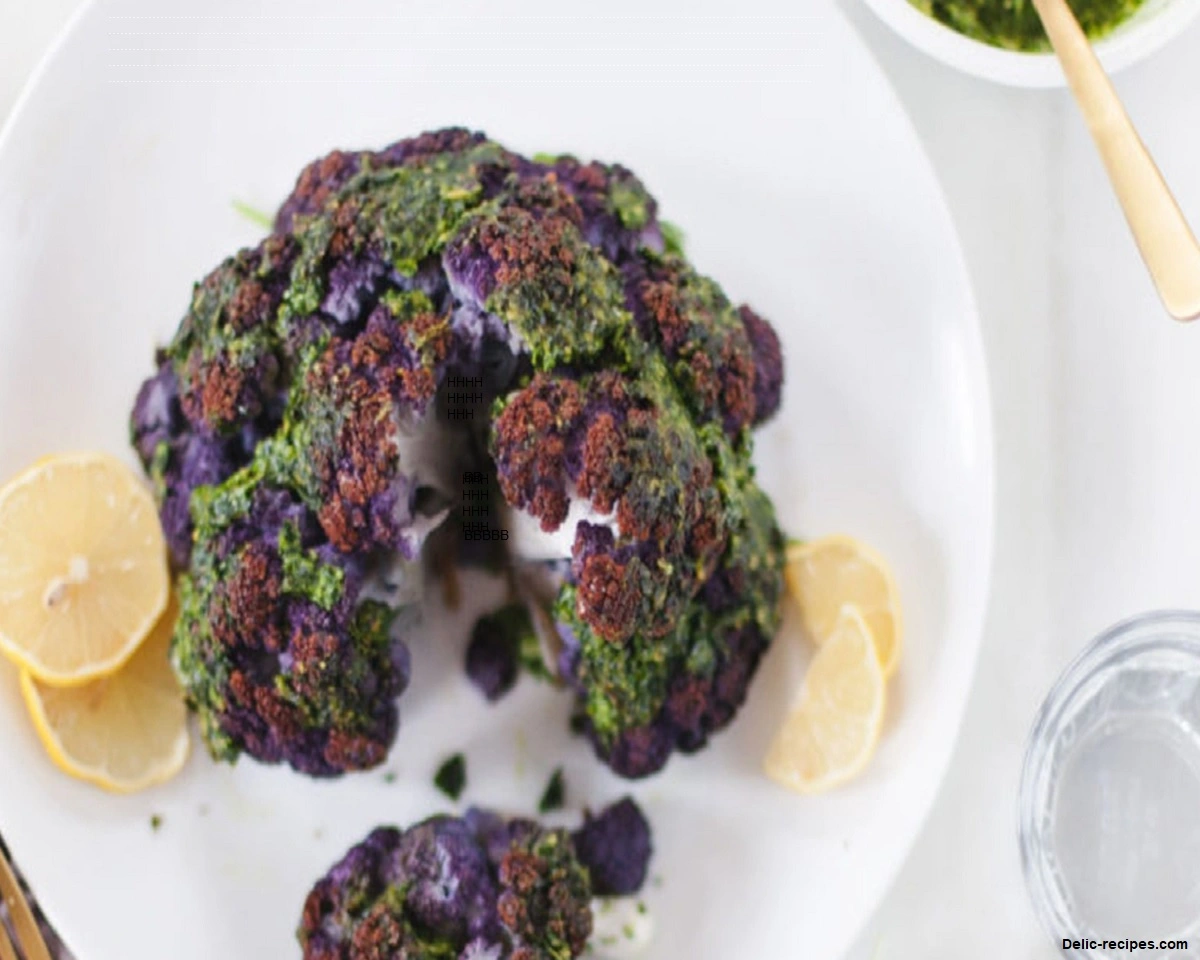Are you tired of the same old white cauliflower? If you’re looking to add a pop of vibrant color to your plate, look no further than purple cauliflower. With its stunning hue and unique flavor, purple cauliflower is a delightful addition to any meal. In this article, we will explore the versatility of purple cauliflower and provide you with a delicious recipe that showcases its natural beauty and taste.
Table of Contents
- Introduction to Purple Cauliflower
- Health Benefits of Purple Cauliflower
- Purple Cauliflower Varieties
- Selecting and Storing Purple Cauliflower
- Preparing Purple Cauliflower
- Purple Cauliflower Recipe: Roasted Purple Cauliflower with Garlic and Parmesan
- Serving Suggestions
- Conclusion
- FAQs
1. Introduction to Purple Cauliflower
Purple cauliflower is a unique vegetable that belongs to the brassica family, which also includes broccoli, cabbage, and kale. What sets purple cauliflower apart is its stunning violet or deep purple color, caused by the presence of anthocyanins, powerful antioxidants that offer numerous health benefits. This colorful cruciferous vegetable is not only visually appealing but also packed with nutrients.
2. Health Benefits of Purple Cauliflower
Purple cauliflower is a nutritional powerhouse. Its vibrant color is a testament to the abundance of antioxidants it contains. These antioxidants help protect your cells from damage caused by free radicals and may reduce the risk of chronic diseases. Purple cauliflower is also an excellent source of dietary fiber, vitamins C and K, folate, and minerals like potassium and manganese.
3. Purple Cauliflower Varieties
There are several varieties of purple cauliflower available, each with its unique characteristics. Some popular ones include Graffiti, Purple Cape, and Sicilian Violet. While they may vary slightly in taste and appearance, all these varieties share the common trait of vibrant purple hues. Experimenting with different varieties can add visual interest and diverse flavors to your meals.
4. Selecting and Storing Purple Cauliflower
When choosing purple cauliflower, look for heads that are firm, dense, and free from blemishes or discoloration. The color should be vibrant and evenly spread across the entire head. To ensure freshness, check for crisp leaves and a clean, fresh aroma. Once you bring it home, store purple cauliflower in a perforated plastic bag in the refrigerator’s crisper drawer. It should stay fresh for up to a week.
5. Preparing Purple Cauliflower
Before preparing purple cauliflower, remove the outer leaves and trim the stem. Rinse the head under cold water to remove any dirt or debris. Purple cauliflower can be enjoyed raw or cooked. When cooked, it retains its color, making it an eye-catching addition to various dishes. Roasting, steaming, or sautéing purple cauliflower are popular cooking methods that help preserve its unique flavor and vibrant appearance.
6. Purple Cauliflower Recipe: Roasted Purple Cauliflower with Garlic and Parmesan
Ingredients:
- 1 medium purple cauliflower head
- 3 tablespoons olive oil
- 3 garlic cloves, minced
- ¼ cup grated Parmesan cheese
- Salt and pepper to taste
Instructions:
- Preheat your oven to 425°F (220°C).
- Cut the purple cauliflower into florets, ensuring they are of similar size for even cooking.
- In a large bowl, combine the cauliflower florets, minced garlic, olive oil, salt, and pepper. Toss well to coat the florets evenly.
- Spread the coated cauliflower in a single layer on a baking sheet.
- Roast in the preheated oven for 20-25 minutes, or until the cauliflower is tender and lightly caramelized.
- Remove from the oven and sprinkle grated Parmesan cheese over the roasted cauliflower.
- Return the baking sheet to the oven for an additional 3-4 minutes, or until the cheese is melted and golden.
- Remove from the oven and let it cool slightly before serving.
7. Serving Suggestions
Roasted purple cauliflower with garlic and Parmesan can be served as a side dish or incorporated into various recipes. Here are a few serving suggestions:
- Add the roasted cauliflower to a salad with mixed greens, cherry tomatoes, and a tangy vinaigrette.
- Serve it alongside grilled chicken or steak for a colorful and flavorful main course.
- Use the roasted cauliflower as a topping for pizzas or flatbreads.
- Mix it into pasta dishes, risottos, or stir-fries for an added burst of color and taste.
8. Conclusion
Purple cauliflower offers a delightful twist to traditional cauliflower recipes. Its vibrant color, coupled with its unique flavor and nutritional benefits, makes it a wonderful addition to your culinary repertoire. Whether you’re a seasoned chef or an adventurous home cook, purple cauliflower provides endless possibilities for creating visually stunning and delicious meals.
9. FAQs
Q1: Is purple cauliflower genetically modified?
No, purple cauliflower is a naturally occurring variety. It gets its vibrant color from the presence of natural pigments called anthocyanins.
Q2: Can I substitute purple cauliflower for regular cauliflower in recipes?
Yes, you can substitute purple cauliflower for regular cauliflower in most recipes. Keep in mind that it may alter the appearance and taste of the dish slightly.
Q3: Does cooking purple cauliflower affect its nutritional value?
Cooking purple cauliflower can cause a slight loss of certain nutrients, but it still retains a significant amount of its antioxidants and other beneficial compounds.
Q4: Are there any other vegetables with vibrant colors like purple cauliflower?
Yes, there are other colorful vegetables like purple carrots, red cabbage, and yellow beets that can add visual appeal and nutritional diversity to your meals.
Q5: Can I freeze purple cauliflower?
While it’s possible to freeze purple cauliflower, it may lose some of its texture and vibrant color during the freezing and thawing process. It’s best enjoyed fresh.

